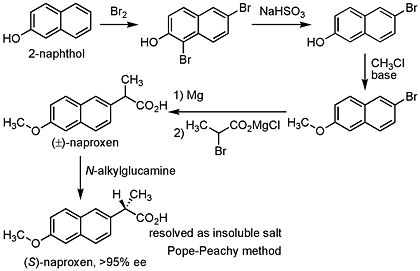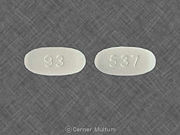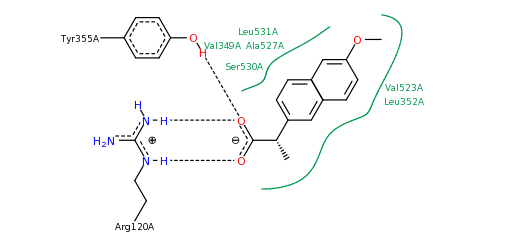Naproxen Sodium is a nonsteroidal anti-inflammatory drug (NSAID) that can be prescribed to relieve inflammation, stiffness, tenderness, or pain that can be caused by:[1]
- Osteoarthritis
- Rheumatoid Arthritis
- Juvenile Arthritis
- Ankylosing Spondylitis
- Bursitis
- Tendinitis
- Gouty Arthritis
Readily available over the counter, naproxen is also used to treat:[2]
- Headaches
- Menstrual pain
- Common colds
- Toothaches
- Muscle ache
- Back pain
"Naproxen and naproxen sodium are marketed under various trade names, including: Aleve, Anaprox, Antalgin, Feminax Ultra, Flanax, Inza, Midol Extended Relief, Miranax, Nalgesin, Naposin, Naprelan, Naprogesic, Naprosyn, Narocin, Proxen, Synflex and Xenobid."[3] Like other NSAID medications naproxen is known to cause ulcers, bleeding, or holes in the lining of the stomach and intestines and should always be taken with a glass of water.
Some of naproxen's side effects, are and are not limited too: constipation, diarrhea, sores in mouth, excessive thirst, headache,
dizziness, drowsiness, ringing in the ears, hearing problems. More severe symptoms such as blisters, changes in vision, rash, hives, difficulty breathing, flu-like symptoms, bloody urine, and stomach pain are also known to occur.[4]
Background Information
Naproxen was first released to the prescription drug market in 1976 under the name Naprosyn. In 1980 its counterpart salt, naproxen sodium, was released for prescription use only under the name Anaprox. In June of 1994, the FDA approved naproxen's use for an over-the-counter drug in low doses, this new drug was advertised as Aleve and marketed by Bayer HealthCare.
Chemical Properties
IUPAC:(+)-(S)-2-(6-methoxynaphthalen-2-yl)propanoic acid
Molecular Weight:230.250 g/mol
Chemical Formula: C14O3H14
Synthesis
 [5]
[5]
Administration
Prescription naproxen comes in tablet form as an extended-release, delayed-release, or liquid suspension pill that can be taken by mouth. Due to side effects is is commonly advised that it is taken with a full glass of water, taking the tablet with milk or food has also been known to prevent nausea, a common side effect.
Pills should always be taken whole, never crushed, chewed, or split.

275 mg naproxen sodium tablet
Target Protein: Cyclooxygenase
Cyclooxygenase abbreviated as COX is an enzyme that is responsible for the production of prostanoids, such as prostaglandins, prostacyclin and thromboxane. These eicosanoids, or more simply signaling molecules, are responsible for inflammatory and anaphylactic reactions, vasoconstriction, and the resolution of inflammation respectively. Inhibition of this enzyme can therefore lead to temporary relief of pain and inflammation.
Nonsteroidal anti-inflammatory drugs, NSAID, target and inhibit the COX enzyme to achieve these desired effects. Of the three variants, (COX-1, COX-2, COX-3), Naproxen targets COX-1 and COX-2. COX-1 is an essential enzyme in the biosynthesis of prostaglandins, responsible for the inflammatory and anaphylactic reations, and is found in the blood, kidneys, and stomach. But COX-1 is also involved in the synthesis of the natural mucus lining that protects the stomach, hence why an overdose, or frequent doses can cause stomach ulcers and bleeding. COX-2 is involved in prostagladin synthesis (all three types) but is only found at the site of inflammation, therefore is not responsible for the notable GI tract side effects that occur with the COX-1 inhibitors. As COX-2 enzymes are found strictly at the site of inflammation, they make an excellent drug target as side effects are limited.
Naproxen In Vivo
Although Naproxen has been on the market for a number of years, little is known about its method of inhibition. While researchers have recently discovered how naproxen binds to the COX-2 enzyme, they have not yet been able to prove how this inhibits the enzyme’s function.
Observing the , one can find the molecules buried deep within the proteins structure. Looking at the amino acids that surround the active site, researchers have found that the NH2 group on Arg 120 and the alcohol on Tyr 355 stabilize naproxen through their hydrogen bonding with naproxen’s carboxylic acid. This can easily be seen through the of the two amino acids and the naproxen molecule.
The binding of naproxen is also stabilized by the hydrophobic interactions that occur between naproxen’s aromatic residues and the various hydrophobic amino acid residues of the active site. Ser 530, Val 349, Leu 531, Ala 527, Val 523, and Leu 352 all work to create a hydrophobic pocket in which the nonpolar region of naproxen can sit. In this these interactions can easily be seen as hydrophobic amino acid residues are pictured in green, Arg in blue, and Try in red, one can grasp a greater understanding of how Naproxen binds to the active site.[7]
While how naproxen binds to COX-2 was discovered in September of 2010, no breakthroughs have yet been make as to how or why naproxen binding inhibits enzyme function. (3nt1).
 [8]
[8]
==Additional Resources==
For Additional Information, See Pharmaceutical Drugs



